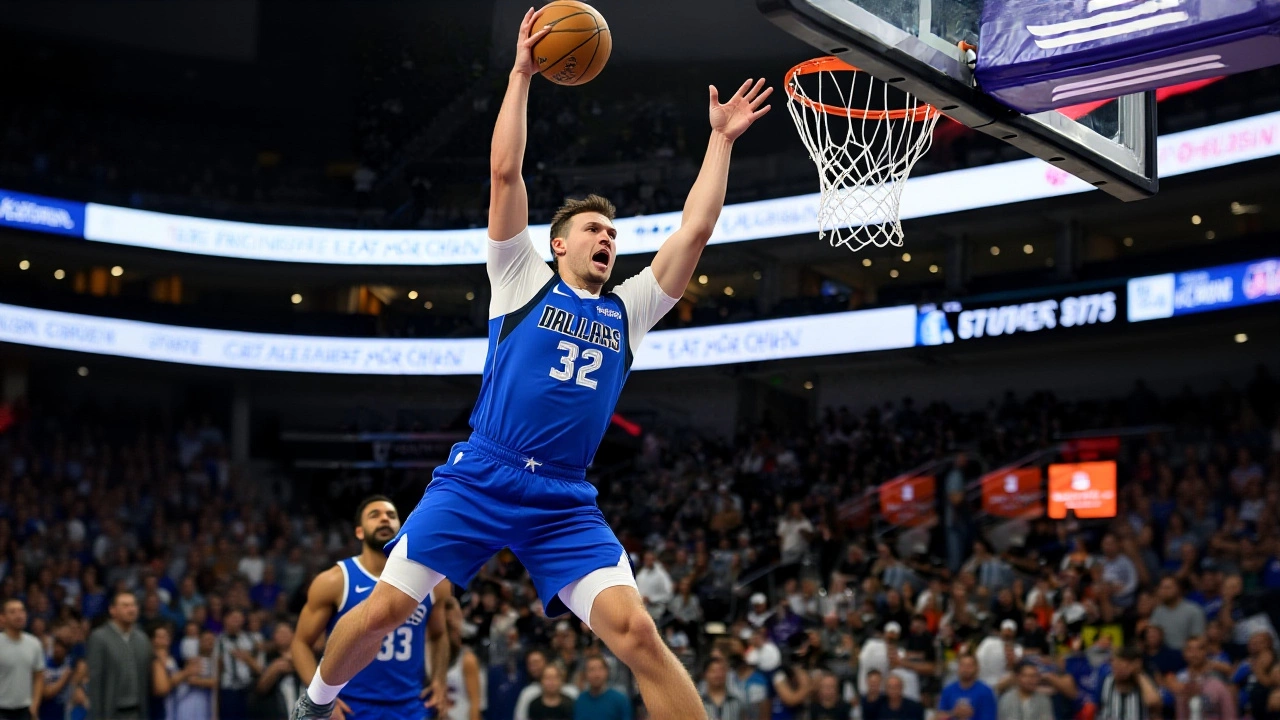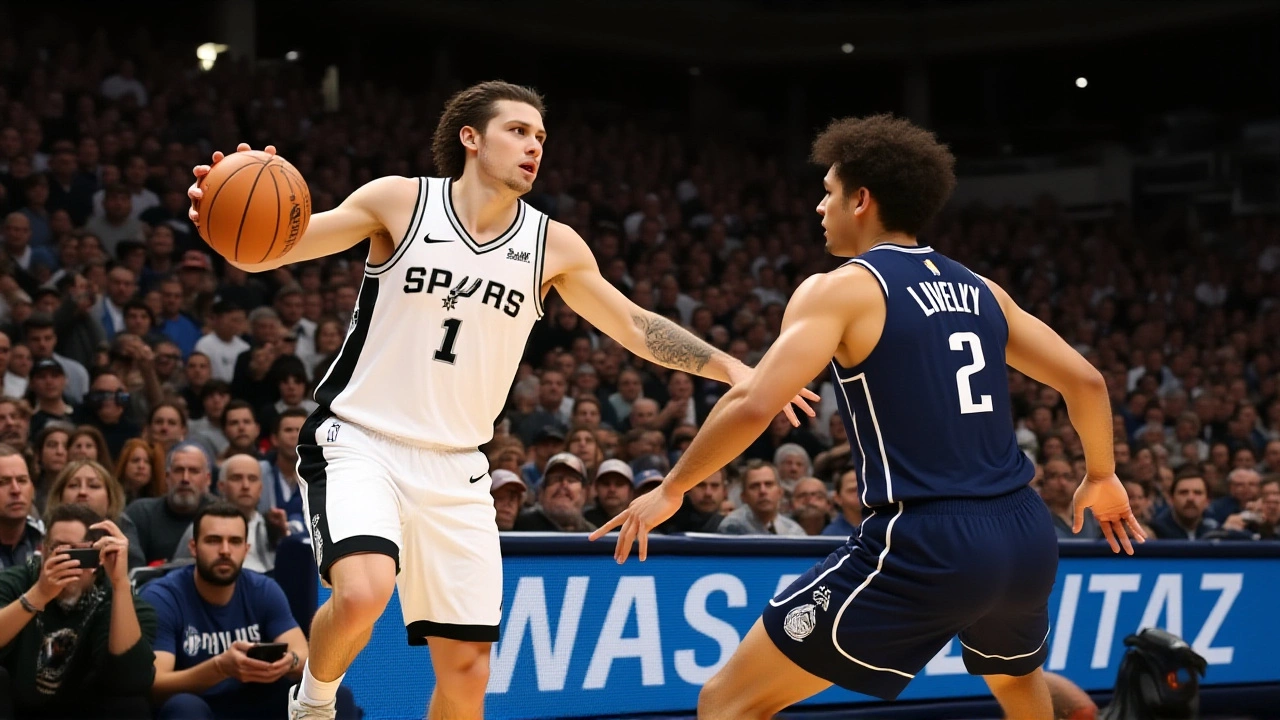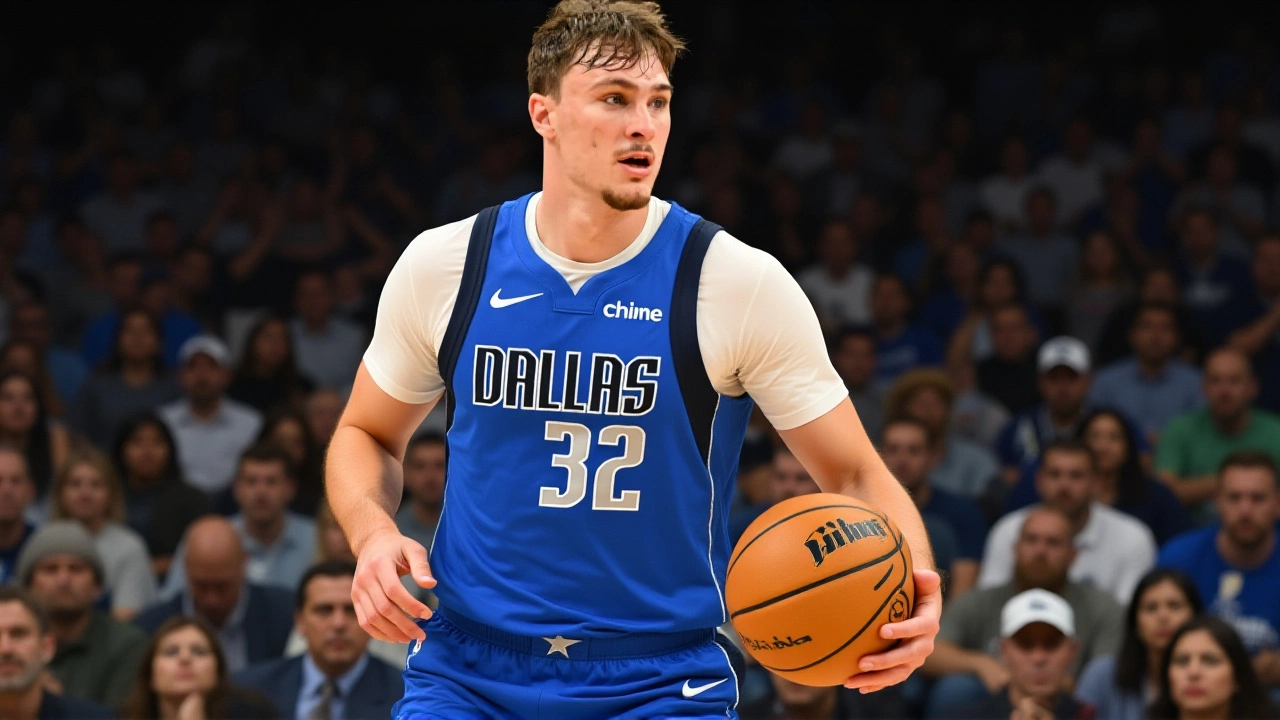On Oct 23, 2024, at the American Airlines Center in Dallas, Texas, Cooper Flagg, the 19‑year‑old No. 1 overall pick of the 2024 NBA Draft, made his league debut for the Dallas Mavericks against the San Antonio Spurs. The game opened the 2024‑25 regular season and ended in a 125‑92 loss, but Flagg still managed a double‑double with ten points and ten rebounds.
Season Opener Overview
The Mavericks entered the night with a sell‑out crowd of 20,315 fans, hoping the rookie would spark a turnaround after a rocky preseason. Instead, the Spurs, led by 7‑foot‑4‑inch French phenom Victor Wembanyama, dominated from tip‑off. Wembanyama poured in exactly 40 points, grabbed 15 rebounds and blocked three shots, turning the contest into a showcase of his second‑year ascent.
Flagg logged 34 minutes, shooting 4‑of‑13 (30.8%) and turning the ball over three times. He didn’t record a single assist, a point his coach highlighted during the post‑game press conference.
Why Kidd Turned Flagg into a Point Guard
Head coach Jason Kidd, the 51‑year‑old former NBA champion, has been vocal about his developmental experiment. Back in June, Kidd said, “I want to make him uncomfortable and see how he reacts being able to run the show. It’s all right to fail, it’s all right to turn the ball over.” The plan was to stretch Flagg’s skill set, forcing him to see the floor from the 2‑ and 3‑positions while handling the ball at the 1.
That decision explains why the 6‑foot‑9 forward started at point guard in his first pro game—a rarity that puts him alongside only a handful of tall guards in NBA history.
Stat Line and On‑Court Moments
Flagg’s first offensive possession was a textbook transition play: he sprinted the floor, caught a lob from 10‑time All‑Star Anthony Davis, and attempted a dunk that rattled out of the rim, sending him crashing onto the baseline. “Not great,” Flagg admitted later, “but we’ve got to move past it.”
During the first half, he recorded six rebounds, no points, and a steal that led to a fast‑break attempt that never materialized. Spurs rookie guard Stephon Castle forced a turnover on Flagg and finished the play with a dunk, underscoring the defensive pressure the Mavericks faced.
Despite the loss, Flagg’s rebound total kept the Mavericks competitive on the glass. He pulled down ten boards, matching the Spurs’ frontcourt presence. The only other rookie to notch a double‑double in a debut while starting at point guard and standing 6‑foot‑9 or taller was a footnote in NBA annals, making Flagg’s achievement noteworthy even in a lopsided defeat.

Reactions from Coaches and Analysts
Kidd stayed optimistic in the post‑game interview. “We’re going to learn a lot tonight. He showed us where the work needs to be done,” he said. Former NBA player and analyst Shaquille O’Neal, who was part of the broadcast team, noted, “You can’t judge a rookie on one game, especially when you’re asking him to play point guard at 6‑9.”
Local sports columnist Jenna Marshall wrote, “Flagg’s shooting will improve, but the Mavericks need to protect him from an onslaught like this. The Spurs’ defense was unforgiving for any rookie.”
What Lies Ahead for Flagg and the Mavericks
The next test comes on Friday, Oct 25, 2024, when Dallas travels to the Washington Wizards at the Capital One Arena. Kidd has confirmed Flagg will start again at point guard, hoping the rookie will adjust his decision‑making and ball‑handling under less intense pressure.
Analysts predict that if Flagg can improve his shooting efficiency to at least 40 % and cut down turnovers, his versatility could make him a matchup nightmare for opponents throughout the season.

Historical Context: Tall Guards in the NBA
- Magic Johnson (6‑9) – revolutionized the point‑guard role in the 1980s.
- Ben Simmons (6‑10) – struggled with shooting but excelled as a playmaker.
- Rudy Gobert (7‑1) – never played point guard, highlighting how rare Flagg’s assignment truly is.
Flagg’s experiment joins a lineage of size‑first playmakers, but unlike his predecessors, he’s entering the league as the No. 1 draft pick, adding extra pressure to perform.
Frequently Asked Questions
How does Flagg’s debut impact the Mavericks’ rebuilding plan?
The debut shows the Mavericks are willing to fast‑track Flagg’s development, even at the cost of early growing pains. If he adapts quickly, Dallas can pivot to a more versatile, position‑less offense, accelerating their timeline to contend within the next two seasons.
Why did Jason Kidd choose to start Flagg at point guard?
Kidd believes forcing Flagg to handle the ball will develop his decision‑making and court vision faster than keeping him on the wing. The experiment also aligns with the NBA’s trend toward larger, more interchangeable lineups.
What were the key differences between Flagg and Wembanyama’s performances?
Wembanyama dominated with 40 points, 15 rebounds and three blocks, showcasing elite scoring and rim protection. Flagg, by contrast, contributed a modest 10 points, ten rebounds and three turnovers, highlighting the rookie’s need for offensive polish and ball‑handling stability.
Will Flagg’s shooting likely improve this season?
Coaches expect his field‑goal percentage to climb as he gains confidence and adjusts to NBA defensive speed. Historical data on top picks suggests a 10‑15 % improvement by mid‑season is common, provided he receives consistent minutes.
What’s the outlook for the Mavericks against the Wizards?
The Wizards are a middle‑of‑the‑pack team, and the matchup offers Dallas a chance to rebound. If Flagg reduces turnovers and the Mavericks tighten their defense, they could keep the game within striking distance and potentially pull off a win.
